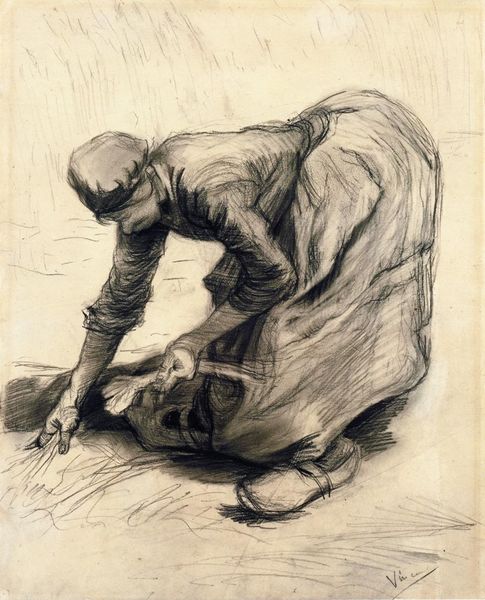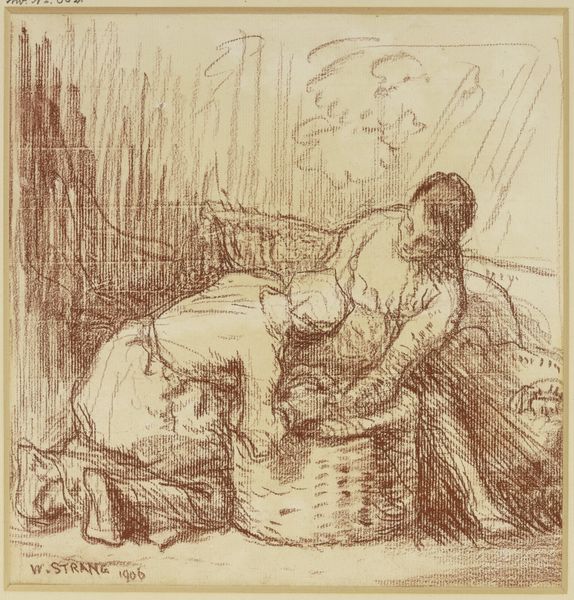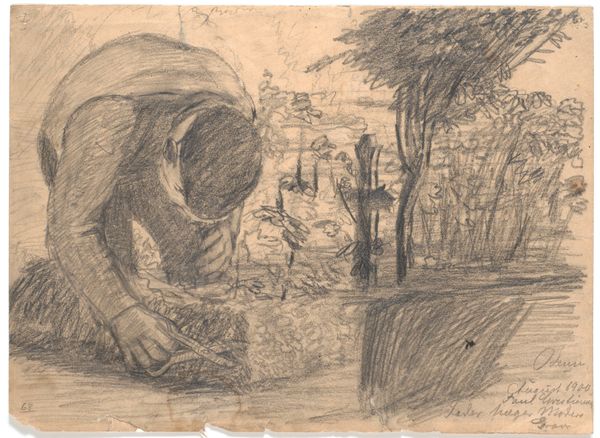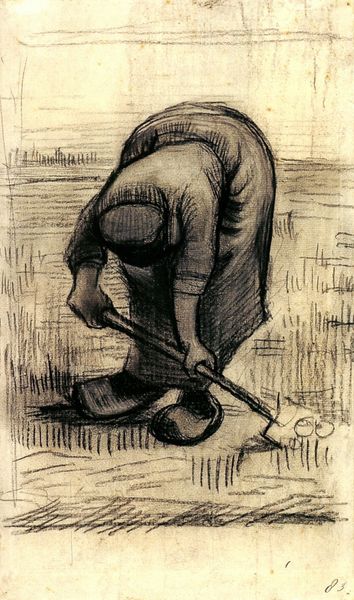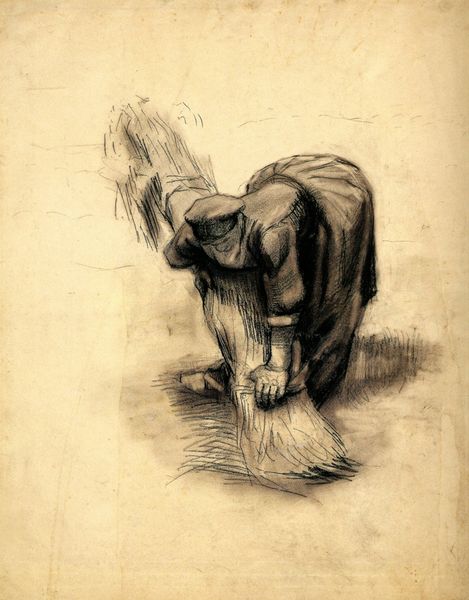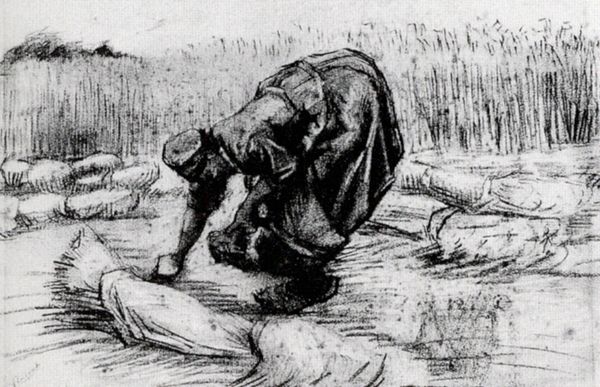
drawing, pencil, charcoal
#
portrait
#
drawing
#
narrative-art
#
impressionism
#
pencil sketch
#
landscape
#
charcoal drawing
#
figuration
#
charcoal art
#
pencil drawing
#
underpainting
#
pencil
#
genre-painting
#
charcoal
#
post-impressionism
#
charcoal
#
modernism
Dimensions: 32 x 26.4 cm
Copyright: Public domain
Editor: This is Van Gogh's "Woman by the Wash Tub in the Garden," created in 1885 using charcoal and pencil. It’s quite striking—the figure’s hunched posture and the dark, almost frenetic lines create a sense of immense labor. What stories do you think this work is trying to tell? Curator: It's important to consider this work within its social context. Van Gogh often depicted working-class individuals, particularly peasants and laborers. What power dynamics do you think are at play when an artist chooses this as their subject matter? Editor: Well, there's a risk of romanticizing or exoticizing their lives, but also a possibility of humanizing them, giving them a visibility they might otherwise lack. Curator: Exactly. Here, the woman’s face is obscured. What effect does this anonymity have, considering broader feminist critiques of art history and the lack of representation afforded to women in their daily routines and lives? Editor: It definitely removes any individual identity, turning her into almost a symbol of labor itself, though that feels a bit reductive. Curator: Perhaps. But isn’t there something incredibly powerful in representing these everyday, often invisible, acts? This drawing forces us to acknowledge the unseen work of women. How do we avoid aestheticizing hardship while also validating it? Editor: That’s a tricky balance to strike. Maybe focusing on the skill and care Van Gogh used in rendering her posture conveys respect, despite the lack of individual features. It prompts empathy and, maybe, a deeper reflection of labour divisions and representations of womanhood? Curator: Indeed. Looking at art this way makes us interrogate the narratives we’ve inherited and challenges us to envision more equitable and just portrayals of labor. Editor: I never thought about it that way, I can see it as an activist work, and more complex than my initial impressions.
Comments
No comments
Be the first to comment and join the conversation on the ultimate creative platform.






